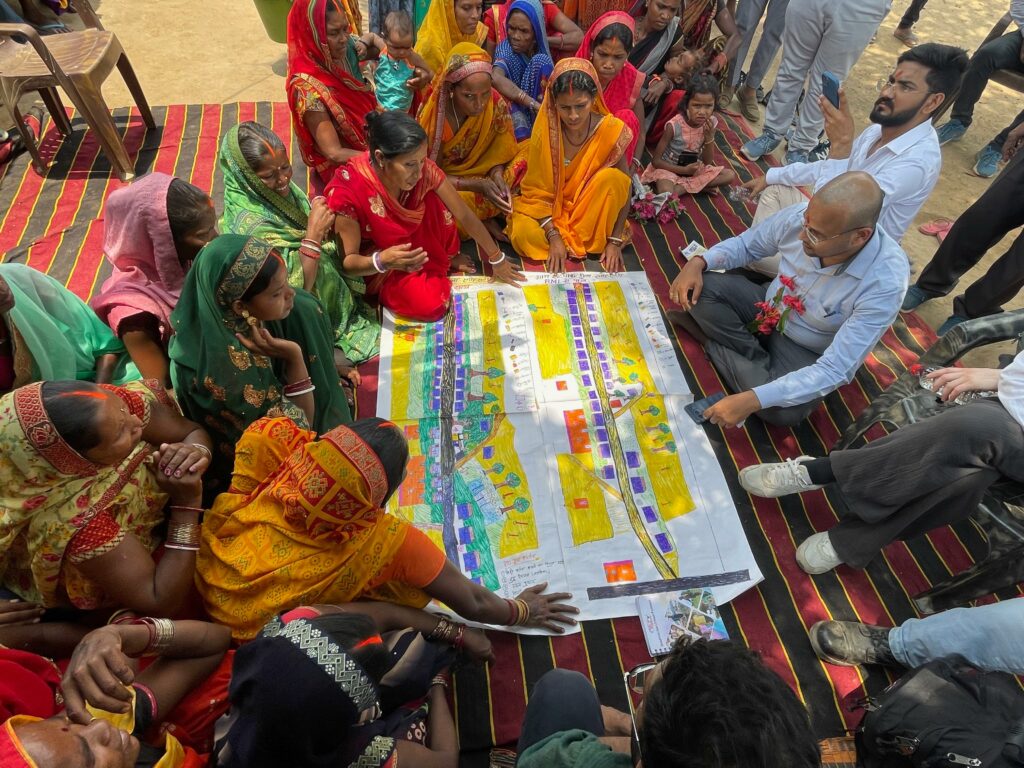Impact Assessment of the BJSAM Community Empowerment Programs

The Responsible Mica Initiative (RMI) has recently finalized the impact assessment of the second cycle of the BJSAM Community Empowerment Programs (CEPs), which were implemented from July 2021 to July 2024 across 50 villages, part of the 180 villages supported in India in total. This comprehensive evaluation, aimed to assess the programs’ effectiveness, impact, relevance, and sustainability in enhancing the lives of communities engaged in mica production, was conducted in collaboration with RMI’s local NGO partners: Bhartiya Jan Utthan Parishad (BJUP), Samajik Parivartan Sansthan (SPS), Samarpan, and Abhivyakti Foundation (AVF).
Improve, RMI’s long-term partner specializing in impact measurement, designed the methodology, analyzed the data, and prepared the final report.
Objectives of the Assessment
The purpose of this comprehensive assessment was to provide insights into how these initiatives have benefited communities engaged in mica production, by evaluating:
- The effectiveness of the programs in improving social security, livelihoods, health, nutrition, and education,
- The relevance of the programs in meeting the specific needs of the mica supply chain communities,
- The sustainability of the impacts achieved through the CEPs.
Field interviews and data collection were conducted by the Kolkata-based Anahat for Change Foundation, ensuring a thorough understanding of the programs’ outcomes and their effects on community well-being.
Key Findings
The impact assessment revealed significant advancements across various domains:
- Social Security: The programs fostered increased connections to social security networks, with findings indicating that community members are now more aware of their rights and the importance of social security mechanisms available to them. This connectivity has provided safety nets for vulnerable households. Also, community ties were strengthened, as 64% of respondents reported enhanced community engagement as a direct result of the CEP initiatives.
- Livelihood Improvement: Participants experienced notable improvements in their livelihoods. The data indicated that 71% of households reported possessing tools necessary to enhance their livelihoods, while 36% noted diversification in their income sources. Importantly, 44% of households experienced an increase in income from their primary means of livelihood, highlighting the program’s effectiveness in promoting financial stability.
- Health and Nutrition: The programs made a significant impact on health outcomes. Increased participation in health-related camps led to greater awareness of healthy lifestyle practices, with 70% of participants adopting preventive health behaviors. This contributed to improved physical health among community members, with approximately 61% reporting noticeable health improvements as a direct outcome of their involvement in the CEPs. Furthermore, 44% of participants expressed increased knowledge about health-related issues, empowering them to make better health decisions. These efforts have been crucial in fostering long-term health benefits within the communities served.
- Education: The CEPs had a transformative effect on educational outcomes within the communities. With an 85% school enrollment rate among children, the programs have positively influenced perceptions of education, with 97% of households acknowledging the importance of educational initiatives. In-kind support for schools, Balwadi Centers, and community libraries further enhanced educational opportunities, fostering a culture of learning.
Sustainability and Recommendations
While the programs achieved significant positive outcomes, the assessment also highlighted areas for improvement. Recommendations for future program cycles include:
- Ensuring Increased Access to Clean Water: It is vital to guarantee access to drinking water in schools to support children’s health and learning.
- Strengthening Educational Resources: Further development of community cultural and educational facilities will continue promoting literacy and engagement in learning.
- Fostering Income Stability: Investigating the profiles of households that have not seen reductions in expenditure can help tailor future interventions for better impact.
- Raising Awareness: Continuous efforts to inform children about their rights and the importance of education are crucial, alongside raising awareness of health practices within communities.
These recommendations aim to build on the successes of the current program while addressing areas that require further attention.
Conclusion
The findings from the impact assessment underscore the importance of RMI’s Community Empowerment Programs in fostering sustainable development within mica-producing communities. As RMI continues to support these communities, the insights gained from this assessment will guide future initiatives, ensuring they are responsive to the needs of the populations they serve.
By prioritizing the voices of the communities and adapting the strategies based on feedback and data, the RMI aims to create lasting positive change in the mica supply chain.
For more information about the BJSAM Community Empowerment Programs and their impacts, please find the full report and its executive summary in our Knowledge Center:


